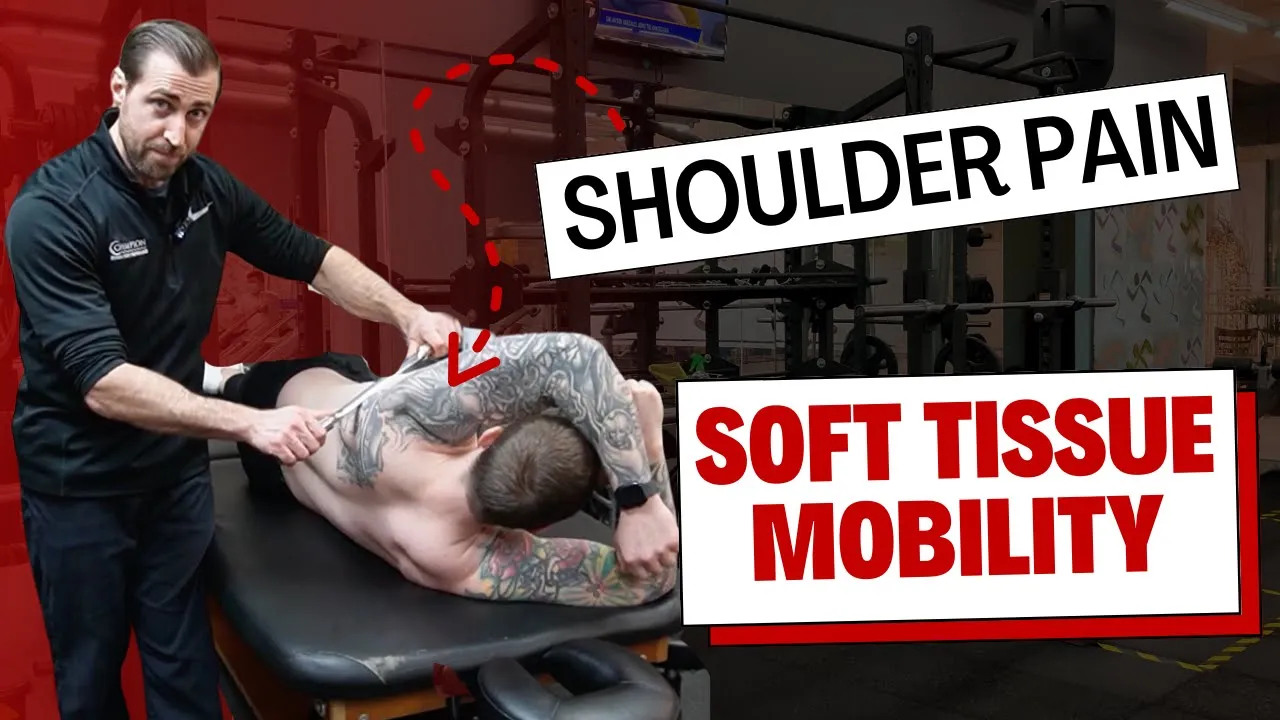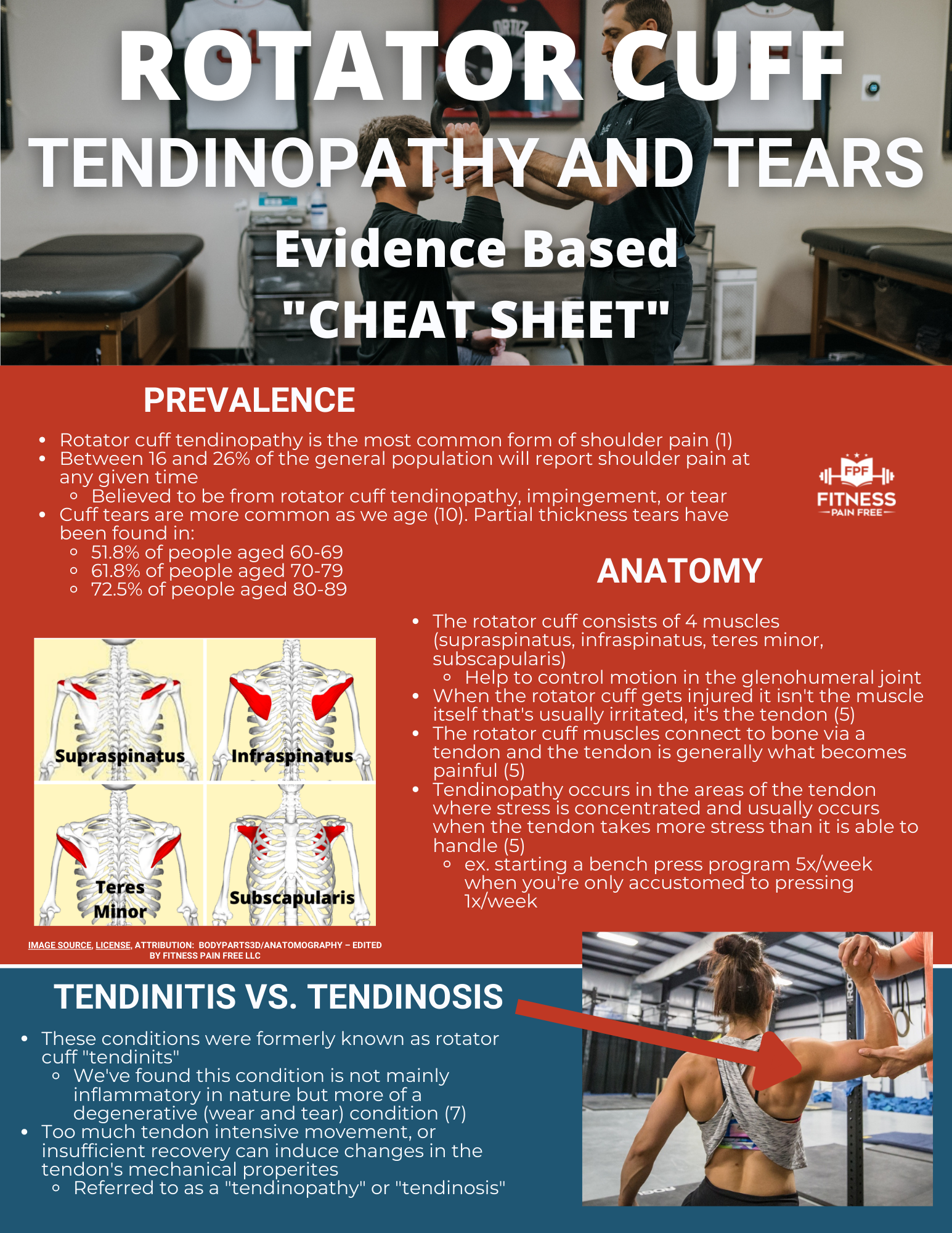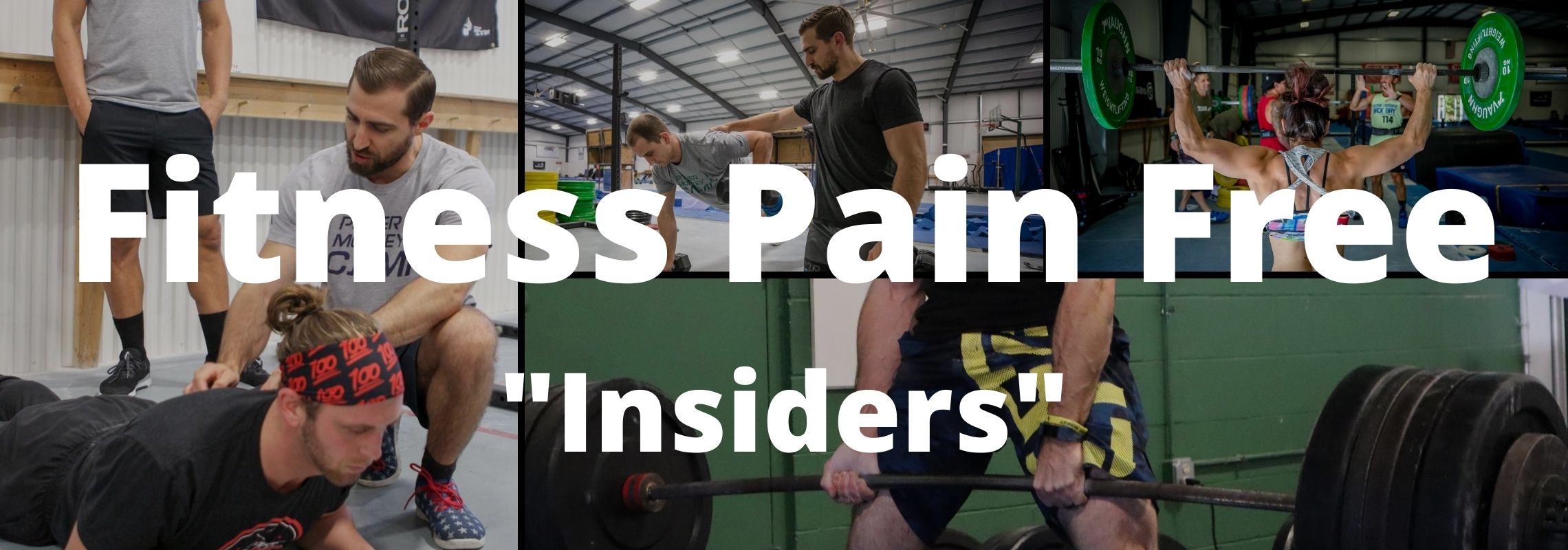
Shoulder Pain Relief: Soft Tissue Techniques Every PT Should Know
To go along with today's episode I have a nice infographic to share...
Sign up to receive FREE: Rotator Cuff Tendinopathy and Tears - The Evidence Based Cheat Sheet
Click HERE to Download FREE
Grab the rest of the Mini Course and Sign up for the Certification Pre-sale list:
- FPF Mini Course - 7 Reasons Why Injuries Happen in the Gym and What to do About it
- The Fitness Pain Free Certification
In today's video we go over Shoulder Pain Relief: Soft Tissue Techniques Every PT Should Know:
- 0:00 - Intro
- 0:11 - Researches' overview
- 0:56 - Paraspinal Muscles
- 5:16 - Posterior Cuff
- 8:34 - Handlebar Infraspinatus
- 11:25 - Lats & Teres Major
- 12:03 - Subscapularis
- 13:26 - Pecs
- 16:59 - Anterior Delts
- 18:54 - Conclusion
Squash that infraspinatus into submission,
- Dan Pope DPT,OCS,CSCS
Show Notes / Relevant Articles:
- FPF Mini Course - 7 Reasons Why Injuries Happen in the Gym and What to do About it
- Essential Beginner Exercises for Rotator Cuff Related Pain | Guide for Physical Therapists
- Rotator Cuff Tear Repair Surgery MASTER CLASS for Physical Therapists [Evidence Based]
- When Do Rotator Cuff Tears Fail After Surgical Repair? | Arthroscopic Surgery, Physical Therapy
- The Ultimate Guide to Rotator Cuff Tears, Tendinopathy and Sub-acromial Impingement Syndrome
- Physical Therapy Diagnosis and Treatment for Rotator Cuff Tendinitis / Impingement
Want to support me and decide topics for future episodes? Click HERE to sign up for FPF "Insiders" for just a dollar. You'll gain access to 100+ webinars, e-books and complete guides. Plus, you'll get private access to the "Insiders" Facebook group where you can have all of your questions answered by me.
Looking for other ways to support me that are 100% free?
- Like, comment and share on youtube, facebook and instagram
- Leave a 5-star review on apple podcasts (Fitness Pain Free Show)
Thank you!
Dan Pope DPT, OCS, CSCS
References:
- Bang MD, Deyle GD. Comparison of supervised exercise with and without manual physical therapy for patients with shoulder impingement syndrome. J Orthop Sports Phys Ther 2000; 30: 126–137.

